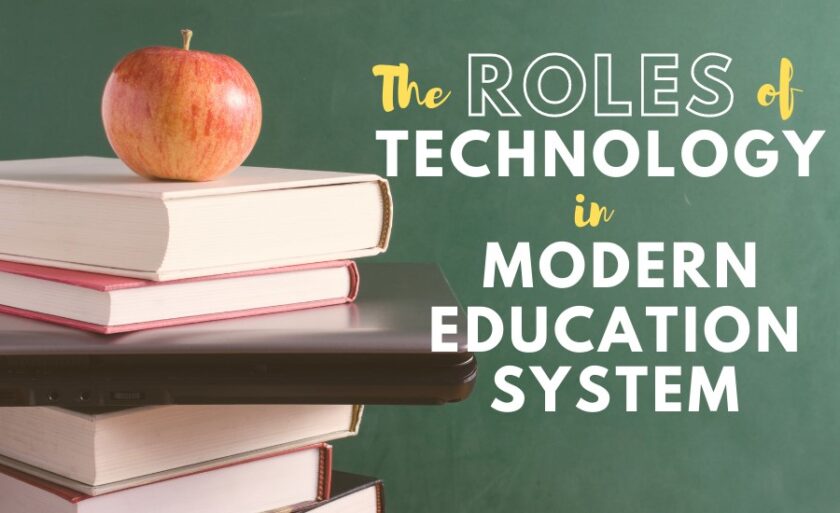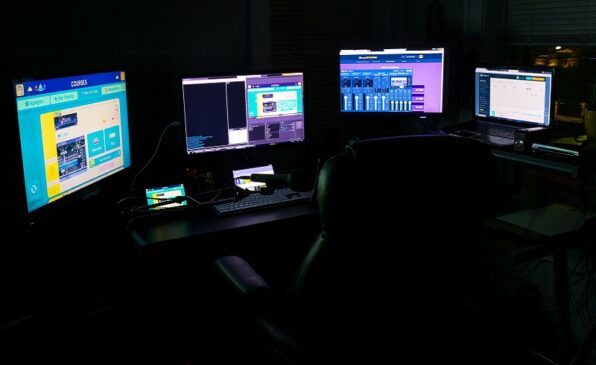The Roles of Technology in Modern Education System

TechsPlace | In education technology, most of the products and services on the market are intended to enhance pupils, teachers, or administrators’ educational experience. Technology has taken hold not only in the modern education system but in any career in any field as well. On the other hand, it has provided benefits for businesses in this digital era. It is a new way to do stuff. Many schools and universities have embraced the Internet as part of their academic system. Simple access to information is one of the critical reasons that technology has been generally accepted.
How Technology Impacts The Modern Education System
1. Improve Collaborative Teaching
It’s now possible for everybody to remain connected even outside the classroom. Students and teachers interact, debate, express their thoughts, and collaborate via the Internet.
These days, eLearning is an interactive educational platform that encourages students to connect and debate. Instead of sitting in a classroom and listening to teachers chatting for 30 minutes, eLearning students will enter an online group or platform and learn together by communicating with peers. In this situation, instructors are more available, and they serve as counselors to help students improve themselves. This collective learning approach has bridged the divide between teachers and students and has also helped students develop their leadership skills.
2. The Use Of Big Data
School administration and educators are looking to use big data and data mining to obtain insight into how their organizations work. In several US schools, big data is used to coordinate school life, from sweeping classrooms to planning bus routes.
Some of the key advantages of a comprehensive data analysis of education will be tracking and forecasting pupil success, increasing graduation rates, and changing school curricula in real-time. Additionally, many see Big Data as an essential method for assessing the school establishment’s operational efficiency. Also, many assume that routine scans can detect potential malfunctions in administration.
Today, there are many educational resources and applications devoted to automating big data processing. Many instruments are used to estimate a school’s success against the goals previously established, whether they apply to academic outcomes or the level of discipline. These tools also help school administrations be informed when a single student is weaker than others.
In this way, big data also adds to the pattern towards the individualization of education. In the past, the critical significance of a pupil failing was a decline in the test grades. Through a constant review of individual student results, it is possible to offer more customized learning, considering individual desires, personal experience, and intellectual abilities.
3. Video-Assisted Learning
In recent years, video-assisted learning has become widely popular as classroom displays. The “Video Day” is no longer a television on a trolley rolled into a class. Any day can be a “video day” with the internet and streaming cameras.
This pattern is also on the rise in distance learning environments, where students learn from computer screens. Images, and animated videos, are handy for enriching lessons and rendering material comprehensible. It increases learning outcomes and reduces the workload of teachers.
4. VR and AR
The class learning environment has undergone a significant shift since Virtual Reality (VR) and Augmented Reality (AR) came to school grounds. The growth in demand for experiential learning is moving the creation of learning with VR and AR forward.
Learning has been more immersive than conventional approaches. Although VR offers a built reality, AR gives an enhanced view of the actual image. They help illustrate abstract ideas that simple photos, or even a lab’s hands-on tests, can’t teach students. For example, VR is beneficial when you attend a medical training course. In-depth, VR offers students a chance to observe real-world surgery in a low-risk environment.
5. Robotics
The development of automated machines and virtual agents capable of executing complex tasks and communicating individually with humans is increasing rapidly. In school, robotics and artificial intelligence applications are helping to create more scalable teaching and learning frameworks. For example, robotics and artificial intelligence may make daily life simpler for students with physical, sensory, or mental disabilities.
“Smart” digital assistants, such as Apple’s Siri, can help perform certain things with a mobile or tablet voice order that allows those who have difficulties viewing the screen or typing. In the future, robots will also improve digital literacy. Many may also accept robotics as a modern medium with personal assistants and other automated computer agents (bots), enabling everyone to interact and obtain information.
6. Artificial Intelligence
School administrators can effectively incorporate artificial intelligence into education to transform some of its elements, such as measuring and grading. Automated algorithms will save time by testing assignments quicker than humans can.
Examples of current AI-driven education resources include plagiarism checkers used by educational institutions, AI Writing Assistant products, writing software, and platforms such as personalized dissertation writing services. Although it is practically difficult for an instructor to spot plagiarized text in various assignments, their role would still be critical in personalizing the test results. However, the advancement of artificial intelligence promises to concentrate on the customization of the curriculum.
Besides, AI strategies can recognize core difficulties and hurdles that students face while studying, systemize them, and better strengthen the education institution. Customization is now one of the essential developments in education, and this is where machine learning applications can save time and increase the quality of education.
7. Blockchain Technology
Blockchain is mostly famous for its uses in financial transfers, user authentication, or computer protection solutions. This technology is can now also be used in the education sector to grant diplomas. Credentials stored on a blockchain provide a more viable and ecological solution to a diploma’s physical replica. It is also a time-saving option since you can easily give your certification to your future boss. Furthermore, digital blockchain-based records prohibit applicants from qualifying for bogus degrees.
Final Thoughts
There may be a lot to absorb as you learn and explore developments in education technology. However, bear in mind that technology has plunged into education and revived the entire teaching and learning process. In particular, eLearning is an instructional platform that improves instruction’s usability and comfort and shifts learning habits and learners’ preferences for learning.
Technology is a human invention, meaning that it is still imperative anytime an educator can apply technology to education. It can help teachers provide multimedia with a range of learning modes, such as animation, live video, and more that improve the learning environment. Moreover, technology in education allows teachers to create online classes available for students anywhere and even learn at their own pace.
Ramon has been writing about technology trends, entertainment, and gaming ever since he left the busy world of corporate HR Tech behind. He currently writes about software and user experiences for Softvire Australia -the leading software e-Commerce company in Australia and Softvire New Zealand. In his spare time, Ramon writes science fiction, collects little yellow men and plastic spaceships.





